IOC floor plan design and staff seating optimization
Applying the business processes approach and social networking tool for the Integrated Operations Centres staff seating optimization
One of the lessons learnt from more than a 20 year story of the application of the Integrated Operations in the Oil and Gas industry, is that choosing the right floor plan and staff seating arrangement could be a surprising factor of success, and has the potential to bring a considerable amount of additional value. At the same time, all the expected collaborative culture can stagnate and possibly degrade due to a poor floor plan or allocating the right high-skilled personnel in the wrong places.
In this article, we will share our own experience of applying the business process management approach as well as the social network building tool to bring an additional perspective to the office staff seating arrangement and make it more transparent and agile. Our area of expertise focuses on organising the Integrated Operations Centres for the Oil and Gas industry, and we firmly believe that a cross-functional collaborative environment is the best place to achieve additional value by seating the right people in the right places to “make right decisions in the right time”. Although we use the following examples from the Oil and Gas industry, the same approach could be applied to other industries and expand out of the frame of the units operating in the cross-functional mode.
Business processes and RACI matrix
The Oil and Gas industry is well-known for its passion to formalizing the business processes and functions. Evidently, different companies are doing it in their own distinct way. However, the most common solution we meet in our projects, is using ARIS that allows user to have a visual representation of the business processes with levels of details per each business function:

Figure 1. Business function representation example, EPC notation
According to the aforementioned approach, any function is characterized by:
-
Incoming documents
-
Outgoing documents (as a result)
-
Information systems used
-
Responsibilities (which are more important for this article objectives)
Often, we see that only the link to the Responsible role is being used. However, we recommend using links to describe Accountable, Consulted and Informed responsible roles in addition to be able to get the RACI matrix from the business process model:

Figure 2. RACI matrix example
Certainly, it is not necessary to have business process models for the RACI matrix, however it is much more difficult and labour intensive to keep it evergreen without having a clear visual representation of the process. Furthermore, the links on the model could be expanded by the additional attributes like labour intensity and frequency:

Figure 3. Business function link attribute
It allows to expand the RACI matrix, to get not only the information about the responsibilities, but additionally the forecasted working hours and to understand the process priorities per each position:
![]()
Figure 4. Example of the RACI matrix with additional attributes

|
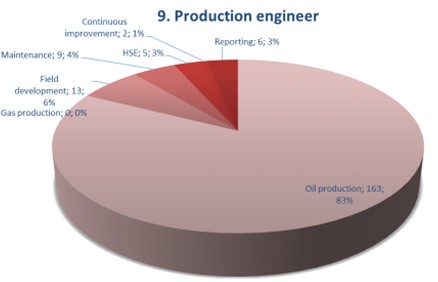
|
Figure 5. Planned working hours per position
Agency matrix
Responsibilities, working hours and priorities are not only one outcome from the RACI matrix, it additionally allows us to measure the importance of collaboration per each pair of specialists, per each function. For example, for the function mentioned in the figure 4: a mechanical engineer is the responsible one and he is being consulted by the integrated planning, and integrated modelling engineers:

Figure 6. The measurement of the collaboration
As a result, looking to the holistic group of functions, it allows us to develop an agency matrix and get an understanding of the importance of collaboration of each specialist to each pair:
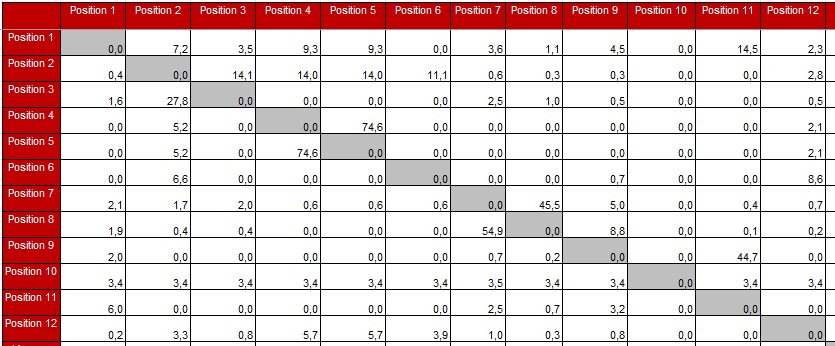
Figure 7. Example of the agency matrix
In the aforementioned example, the matrix includes 30 specialists, the measure of the collaboration importance ranges from 0 to 100%.
The agency matrix could be brought to the visual format, Our preference is to use the Social Network Visualizer to do so:
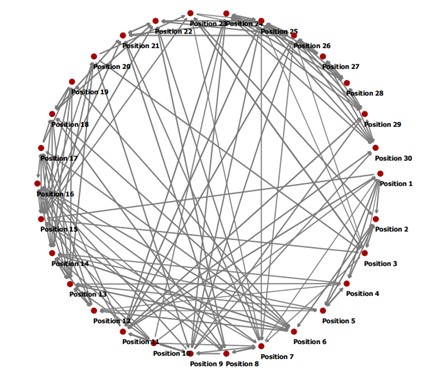
Figure 8. Visual representation of the agency matrix
At first glance, the diagram could appear complex. However, it allows the user to get the full picture of the collaboration routes in your working environment.
It is necessary to mention that the agency matrix could be built without the processes and RACI part. Yet, we believe that it is a useful tool to double check that nothing vital is forgotten, and the decision is supported by the measured data.
Seating optimization
The prepared social networking diagram could be laid on the floor plan in order to get an understanding of how the specialists will collaborate. Taking in consideration of the physical walls and get the visual tool to optimize the seating arrangement:
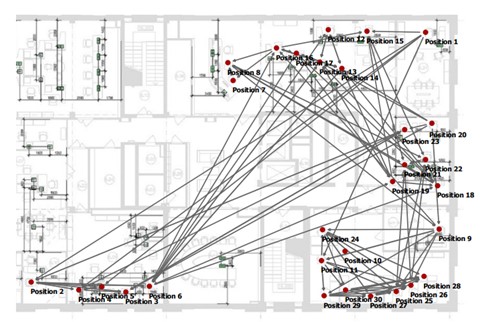
Figure 9. Initial seating arrangement
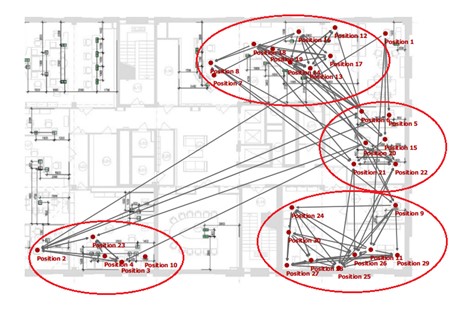
Figure 10. Cluster based optimized seating
Life is always more complex than simplified mathematical models and brings a lot of restrictions (as you can see the floor plan is not the best one for a collaborative environment), however the tools mentioned in the article can help to achieve additional value, or at least to minimize the negative impact of the existing restrictions.
Conclusions
-
Choosing the right floor plan and staff seating arrangement could be a crucial factor of success and can bring a considerable amount of additional value.
-
Expected collaborative culture could not be achieved and even degrade because of the poor floor plan or allocating the right high-skilled people in the wrong places.
-
Business process management methodologies and tools applying in the industry can bring almost all the necessary data to build a transparent understanding of the collaboration routes and their importance for each position.
-
Social networking tools can also bring considerable value under the design IOC phase or minimize the negative impact of the restrictions of the existing building.
Thank you for reading! We will be happy to collaborate in case of any questions or comments by e-mail info@nafta-e.com
